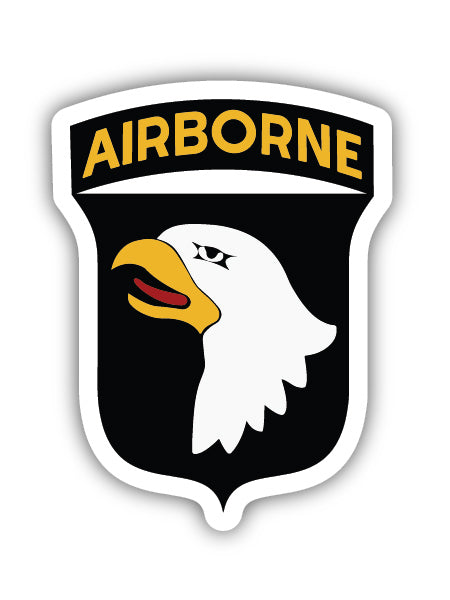The 101st Airborne Division, the legendary “Screaming Eagles,” is one of the U.S. Army’s most famous fighting formations. Activated in 1942, the division parachuted into Normandy on D-Day, fought at Carentan and Bastogne, and later transitioned into an air assault division in Vietnam. Since then, the 101st has served in Iraq, Afghanistan, and worldwide as America’s rapid-response force. Known for its eagle patch and motto “Rendezvous With Destiny,” the 101st remains synonymous with courage, innovation, and airborne heritage. Airborne Apparel Company is proud to offer reproductions and unique designs that celebrate the legacy of the 101st Airborne Division.
The 101st Airborne Division was activated on 16 August 1942 at Camp Claiborne, Louisiana. Its first commander, Major General William C. Lee, predicted the division would have “a rendezvous with destiny,” a phrase that became its official motto. Known for its screaming eagle shoulder patch, the division quickly became one of the Army’s most recognizable formations.
The 101st made its combat debut on D-Day, 6 June 1944, parachuting and glider-landing into Normandy to seize causeways, towns, and bridges behind Utah Beach. The division fought through Carentan and Normandy’s hedgerows, proving the effectiveness of airborne troops in large-scale operations.
In September 1944, the 101st parachuted into Holland during Operation Market Garden, fighting around Eindhoven and the Nijmegen corridor. Later that year, the division earned immortal fame during the Battle of the Bulge, where it held the besieged town of Bastogne against overwhelming German forces. Despite being surrounded, the Screaming Eagles’ stand became a symbol of American determination. The division went on to participate in the final drive into Germany, cementing its place in World War II history.
Vietnam and Air Assault Evolution
After World War II, the 101st transitioned from parachute infantry to airmobile and air assault operations during the Vietnam War. Redesignated as the Army’s only air assault division, it used helicopters to deliver infantry into battle, pioneer tactics, and provide mobility in jungle warfare. The division fought in major operations including the A Shau Valley, Hamburger Hill, and numerous campaigns throughout South Vietnam.
This transformation from paratroopers to helicopter-borne infantry defined the 101st’s modern identity while preserving its airborne heritage.
Modern Deployments
The 101st Airborne Division has remained at the forefront of American operations in the 21st century. The Screaming Eagles deployed to the Middle East during the Gulf War (1991), and extensively in Iraq and Afghanistan during the Global War on Terror. The division’s brigades have conducted counterinsurgency, stability operations, and air assault missions across both theaters.
Legacy and Nicknames
-
Motto: “Rendezvous With Destiny.”
-
Insignia: Screaming Eagle shoulder patch.
-
Nicknames: Screaming Eagles; its battalions carry proud monikers such as the “Currahees” (506th Infantry), “No Slack” (2-327th Infantry), and “Rakkasans” (187th Infantry).
-
Honors: Multiple Presidential Unit Citations, foreign awards including the French Croix de Guerre, Netherlands Orange Lanyard, and Belgian Fourragère.
Enduring Significance
From parachuting into Normandy and holding Bastogne, to pioneering air assault in Vietnam and deploying in Iraq and Afghanistan, the 101st Airborne Division represents airborne adaptability, courage, and innovation across generations. It is one of the most decorated and respected divisions in U.S. Army history.
Airborne Apparel Company is proud to offer reproductions and unique designs that celebrate the legacy of the 101st Airborne Division.


















